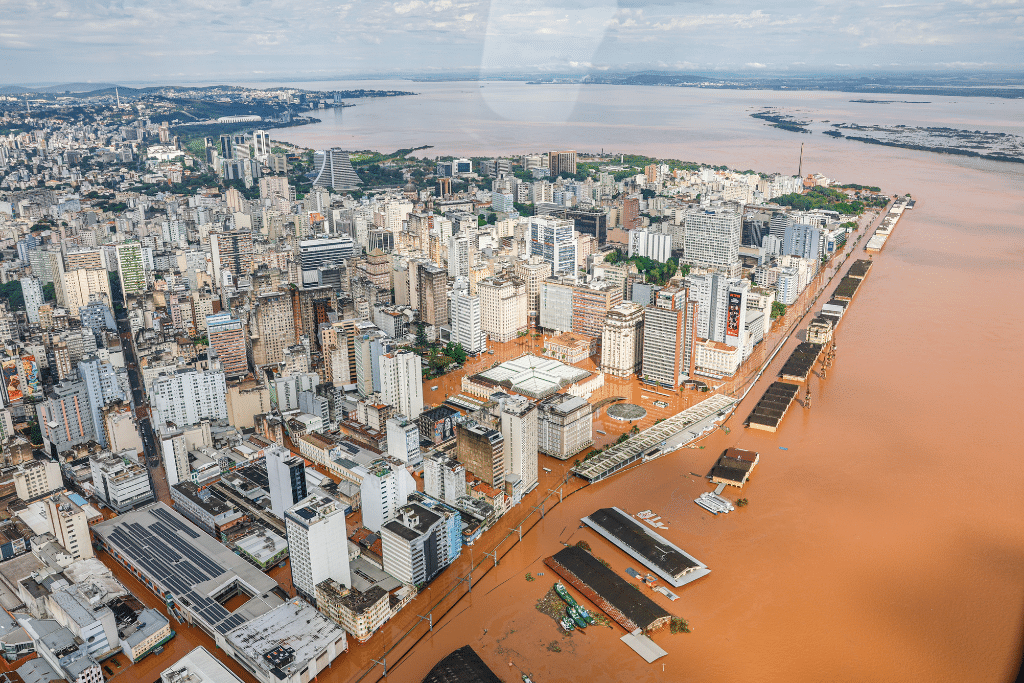Computational Fluid Dynamics (CFD) helps simulate how air, water, and heat move around objects and can be employed in climate-resilient cities, infrastructure, and buildings by optimising ventilation, temperature regulation, and structural stability, supporting climate adaptation.
—
By Nick Wirth
When we can understand and predict how air and liquids move, we can better design for climate resilience. I know this first-hand.
I started my engineering career designing Formula One race cars. My teams developed a secret advantage; by the mid-2000s, we did not need to deal with the costs and wait times of a wind tunnel. Instead, I was able to model race cars through simulation alone. The method, known as computational fluid dynamics (CFD), allowed us to accurately forecast how air would flow around the car, meaning we could iterate our designs faster – and cheaper – than our competitors.
But the potential of CFD stretches far beyond fast cars. Understanding how air, water and heat flow holds the secrets to designing more resilient homes, cities and critical infrastructure in light of a rapidly accelerating climate crisis.
What Is Computational Fluid Dynamics?
Computational Fluid Dynamics uses mathematics and computer simulations to replicate the behavior of gases and liquids in a virtual environment. This allows us to test the aerodynamic properties of certain designs. Beyond race cars, it allows us to simulate – for example – how wind flows through a city or how water might flow through coastal regions during a flood.
In the media, solutions that help mitigate climate change get the lion’s share of coverage. However, climate change is no longer a future problem; it is unfolding now, making adaptation technologies just as important.
CFD Can Design Cooler, Resilient Cities
Climate change affects cities disproportionately.
58% of the world’s population lives in cities, with the figure set to hit 62% by 2035. While covering less than 1% of global land surface area, they account for 67-72% of global carbon dioxide emissions. And as the urban population continues to grow, its environmental footprint will expand significantly.
Cities absorb heat, and as temperatures rise, millions around the world will be exposed to a phenomenon known as the urban heat island effect.
Urban heat islands can make cities up to 10C hotter than neighboring areas. This can create a vicious cycle, whereby hotter cities lead to greater usage of ventilation and air conditioning, which in turn drive up emissions. Often, it is lower-income, densely populated areas that are disproportionately affected, and least able to afford air conditioning systems and the energy that powers them.
Two of the key causes of urban heat islands are poor ventilation and choice of surface materials. CFD can help city planners decide where to locate parks, reflective surfaces and ventilation corridors. For example, Singapore’s urban planners used CFD to design wind corridors that channel cooling breezes through dense neighborhoods.
CFD can be used to make buildings more resilient to stronger winds, too. It can be used to test how buildings respond to wind loads, which will prove crucial in cities that are more exposed to hurricanes, cyclones, and other high-wind events.
CFD can lower temperatures in houses, too. By understanding how air flows through a house, windows, corridors and bedrooms can be placed in a way that promotes even air movement throughout a house, further reducing reliance on ventilation systems.
Many of these techniques were pioneered by ancient architects. For example, the Romans and Greeks were skilled at creating structures like atriums and colosseums that created natural ventilation. Nowadays, we can use CFD to understand why these methods worked and, more importantly, how to replicate them.

Designing For Flood Resilience
Floods are the most common and costly natural disaster. Between 2000 and 2019, floods accounted for 44% of all recorded disasters. Like other extreme events like droughts and hurricanes, a warming climate is making floods more frequent an intense.
Most cities are woefully ill-designed for flood resilience. For example, Dubai’s poor drainage system left it uniquely vulnerable to the floods of 2024.
CFD can simulate how water will flow through a city during extreme rainfall or rising tides. These simulations are vital for designing flood defences, green stormwater systems, and so-called “sponge city” infrastructure, which absorbs water instead of deflecting it.
Take Rotterdam; some parts of the city sit 7 metres below sea level, making it vulnerable to flooding and sea level rise. The city has used CFD technologies to simulate water flow and flood risks. Armed with a greater understanding of how a flood could and would permeate the city, Rotterdam urban planners have built “green blue” corridors – watercourses and pounding areas made to capture excess water. They have designed underground car parks that can capture rainfall, and even engineered floating structures designed to be resilient in case of flood.
These structures use buoyant platforms and flexible anchoring systems to stay stable on the water. For example, some homes are designed to float on a concrete hull fixed to the shore.
With cities increasingly expanding out to coastal regions, CFD will prove an invaluable tool for designing flood-proof cities in the future.

Wildfire Management
Wildfires are becoming larger, faster, and more destructive. In 2023, Canada lost over 4.3 million hectares of forest to wildfires. Similarly, the more recent fires in Los Angeles, California served as a reminder that everyone, regardless of wealth or status, is vulnerable to the fallout of climate change.
CFD can help us understand how wind carries both fire and smoke. These models can help to predict fire patterns, guide the placement of firebreaks, and design evacuation strategies. They also aid in building fire-resilient structures by simulating how embers and heat might travel in complex terrain.
Wildfires can also be the result of controlled burns that go wrong. For example, the Calf Canyon/Hermits Peak Fire – the largest wildfire in the history of New Mexico – was started by two distinct instances of controlled burns, both intentionally started by the US Forest Service. In this case, CFD can be used to better control these burns, reducing the risk of them spiralling out of control.
Future Outlook
This list does not cover the full potential of CFD for climate resilience. CFD remains under-used primarily because of its complexity, and the high computer-processing power it demands. But this is set to change.
Ongoing improvements in hardware are lowering CFD’s cost and energy intensity. High-performance computing chips are becoming exponentially cheaper and more powerful. Similarly, high-performance computing clusters and cloud-based supercomputing platforms are becoming faster and more efficient.
They are becoming easier to use, too. Artificial intelligence will increasingly make CFD accessible to those with limited coding skills. The wealth of online tutorials, community support, large language models and freely available datasets all mean that open-source CFD are becoming more accessible for urban planners with limited budget and training. Of course, as with any new technology, those new to CFD must be wary of poorly analyzed CFD systems, as this can lead to faulty or dangerous design.
Ultimately, the accessibility of CFD will rise exponentially. As more people use it, more pre-validated models and standardized datasets will emerge. This shared knowledge base can significantly reduce trial-and-error cycles.
—
About the author: Nick Wirth is the founder of Wirth Research. He is also the former owner of the Simtek Formula One team, and former technical director at the Benetton and Virgin Racing teams, and fellow of the Royal Institution of Engineering.
This story is funded by readers like you
Our non-profit newsroom provides climate coverage free of charge and advertising. Your one-off or monthly donations play a crucial role in supporting our operations, expanding our reach, and maintaining our editorial independence.
About EO | Mission Statement | Impact & Reach | Write for us







